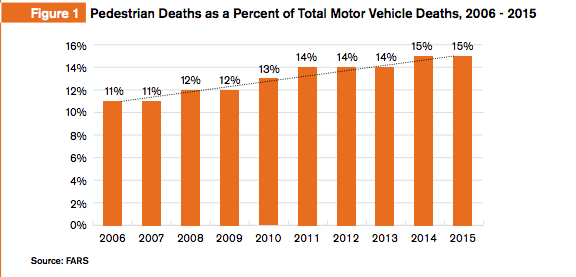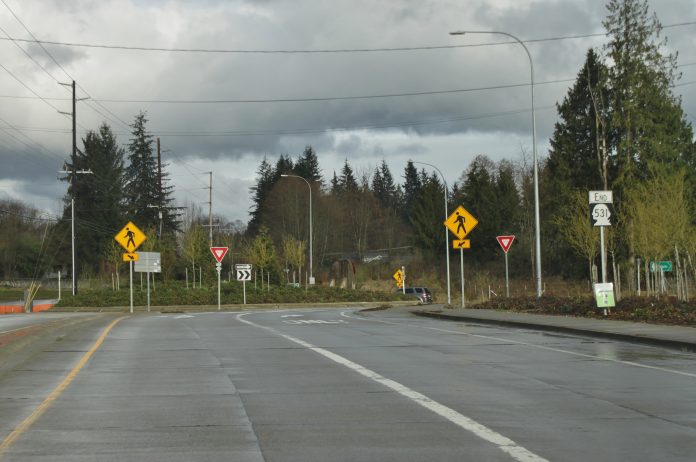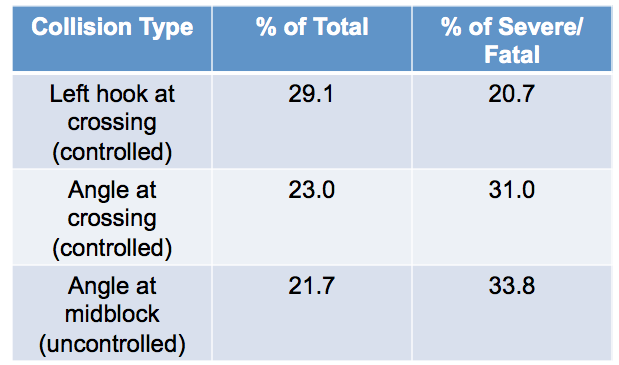The Washington State House, fresh from delivering a significant flesh wound to Sound Transit’s taxing authority last week, turned its attention this week to addressing an epidemic on our state’s streets and highways. In 2015, distracted driving accounted for nearly one-third of the deaths from traffic violence in Washington, 170 deaths out of 567. The 2016 number isn’t known yet, but a person being killed due to someone failing to put down their mobile device every other day, on average, is something that lawmakers can be counted to do something about–eventually.
Citing “time for the public to adjust”, lawmakers succeeded in passing an amendment that moved the date of implementation for the increased fines and restrictions on mobile device use (e.g., cell phones, smartphones, tablets, laptops, and game consoles) while driving from January 1 of 2018 to January 1 of 2019–a 600 day grace period during which, if the trends hold, nearly 300 people will die. The delay on activating the law comes after a previous attempt at a distracted driving law update died in the 2015 session, killed in the Democratic-controlled House.
Current ridiculous state law only forbids holding a cell phone directly to your ear while driving and using it to text message. Holding a phone away from your face while flying down the interstate is completely legal, and will remain so until well after the next Congressional elections. When the bill takes effect, the only allowed activity that can take place between a driver and a cell phone is using your finger to activate a navigation app or the hands-free function. The fine for a first infraction is $136, increasing to $245 on the second offense. Governor Jay Inslee still needs to add his signature for the bill to take effect, something he is guaranteed to do.
While in the realm of possibilities but a likely long-shot, Governor Inslee could use his line-item veto power to strike the 600-day delay with the stroke of a pen. If he did, the law would come into effect 90 days from the closure of the legislative session. That could mean implementation of the law as soon as late July. Let the Governor know he should do just that.
The bill follows nationwide reports of a massive increase in deaths of pedestrians on the nation’s roadways in 2016. Nationwide there was an 11% increase in pedestrians killed on our roads–2,660 people who died trying to get from one place to another without a car. Washington State’s 2016 numbers appeared to show a decrease from 2015, but excluded from those numbers are people in wheelchairs, or on skateboards. In other words, not all vulnerable users are getting counted–when they are included, pedestrian deaths were up in 2016 over 2015. And that’s following a 28% increase in pedestrian fatalities in Washington the previous for 2015 compared to 2014.
The easy narrative is that pedestrians are being killed in record numbers because of the proliferation of cell phones in both drivers and pedestrians. This narrative is easy to accept and go along with, because it allows the reader to assume equal responsibility for those involved. But what gets forgotten when the story breaks down to blaming pedestrians for looking at their phones while walking–a perfectly legal everyday activity–is the role that our streets need to be playing in ensuring our safety.
As cars become safer and safer, as technology that helps drivers behind the wheel improves, the burden when the systems we’ve designed fail falls on vulnerable users–pedestrians and cyclists. One statistic that is sure to keep going up is the share of motor vehicles deaths that are pedestrians. From 2006 to 2015, as the chart below shows, that share went from 11% to 15%.

But Vision Zero campaigns like Seattle’s and Washington State’s “Target Zero” campaign, when they focus on personal responsibility are doing a disservice to successful Vision Zero efforts elsewhere–most notably in Sweden. There the focus is on engineering the streets to be forgiving when a pedestrian takes her eyes off the road for a moment and even when a driver makes the dangerous decision to drive while intoxicated or while texting. The places where Vision Zero works have been able to reduce fatalities and injuries by looking comprehensively at how their cities are designed and redesigning intersections and streets to allow for more of a margin for error. They look at where the most frequent collisions happen and apply those lessons systematically, not chasing after the most dangerous places.
In Seattle, we have just begun to apply the lessons from Vision Zero. The Seattle Department of Transportation’s nine-year collision study showed that 29% of pedestrian crashes were caused by a left-turning vehicle, and 23% by a right-turning vehicle. These two collision types accounted for 50% of severe and fatal crashes during the study period.
Distracted driving laws should be sensible and carry real penalties. But to focus on the behavior of road users rather than the design of our unsafe streets, we will forever be pursuing a fruitless endeavor. Pursue both, and we could make a real difference. Let’s see how much we can get done in 600 days.
The featured image was produced by SounderBruce (Flickr).
Ryan Packer has been writing for The Urbanist since 2015, and currently reports full-time as Contributing Editor. Their beats are transportation, land use, public space, traffic safety, and obscure community meetings. Packer has also reported for other regional outlets including BikePortland, Seattle Met, and PubliCola. They live in the Capitol Hill neighborhood of Seattle.



